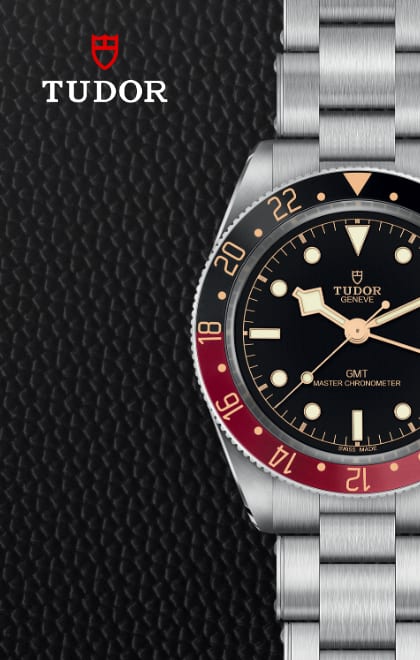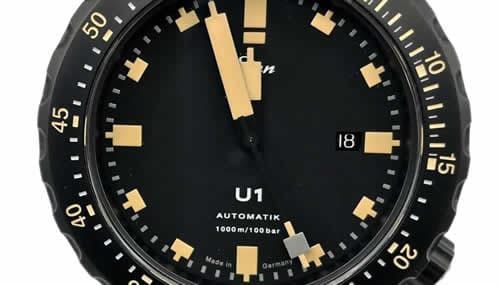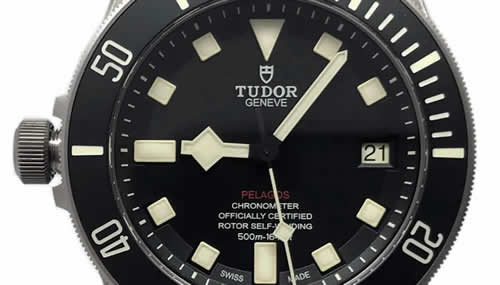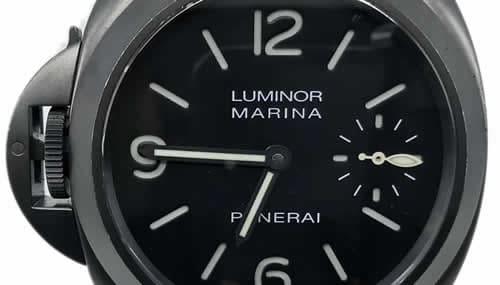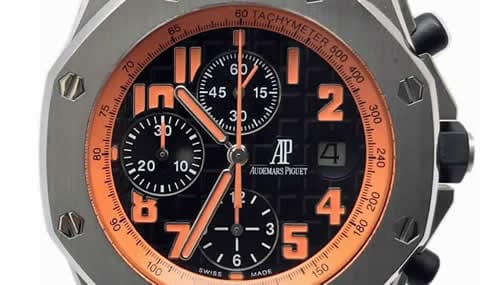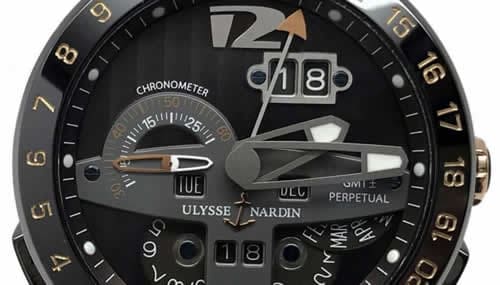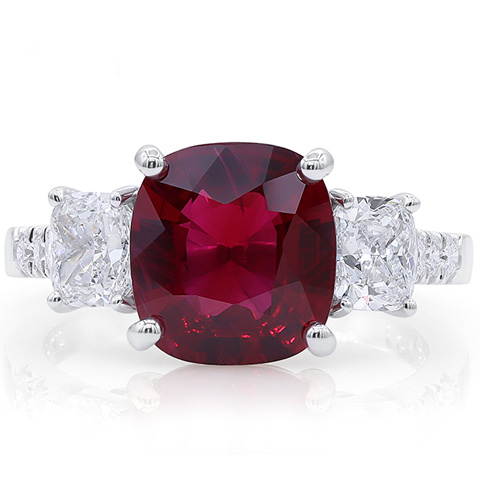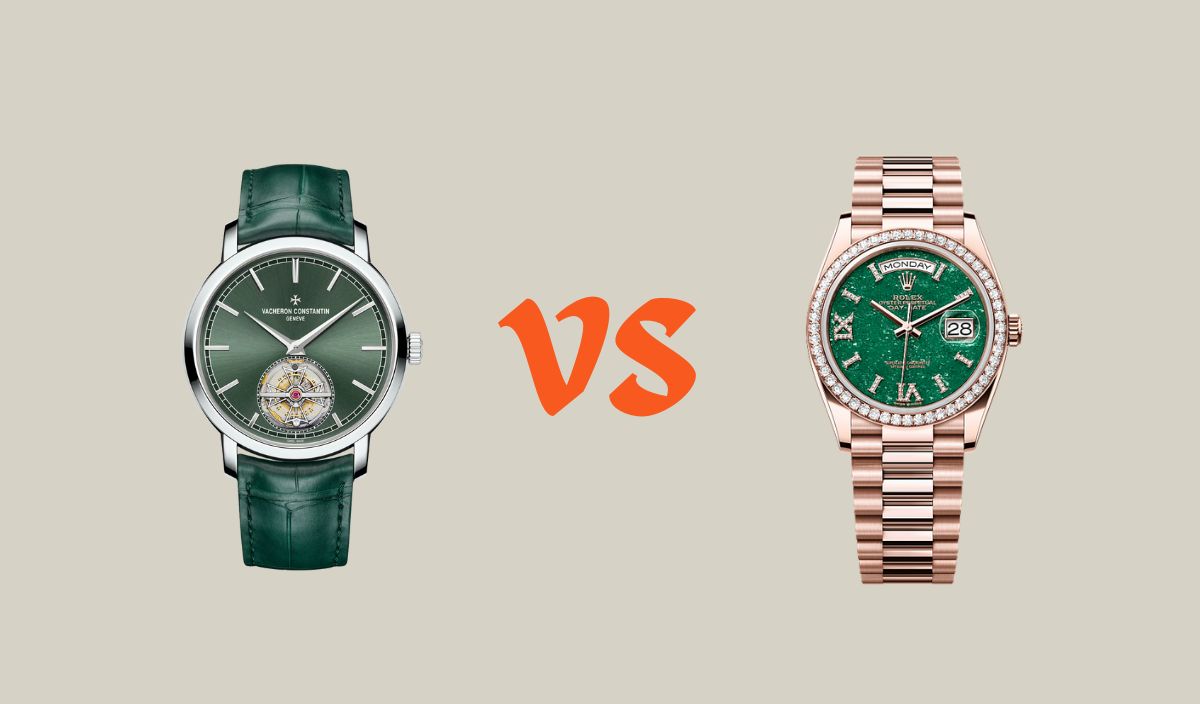
Vacheron Constantin vs Rolex – Which Swiss Icon is Better?
Vacheron Constantin and Rolex are watchmaking giants that have celebrated several horological feats over the years, but which brand is best?
In this piece, both brands go head-to-head in a comparison guide, determining what features and historical milestones make them unique and worth the investment. Which will you choose? Let’s begin with a look at the history of both brands.
Brand Heritage
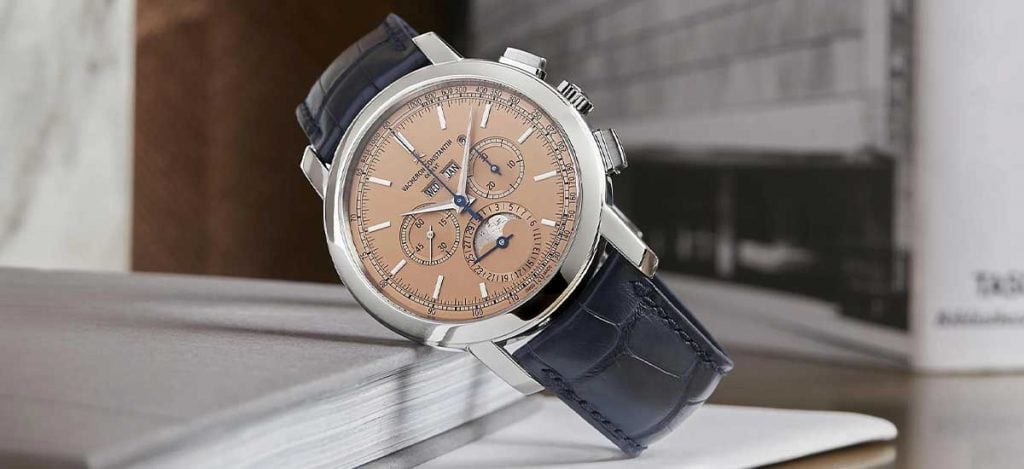
Part of the appeal of owning a watch from either of these brands, Vacheron Constantin or Rolex, is their rich history in watchmaking. Vacheron Constantin is by far the oldest, beginning in 1755 when Jean-Marc Vacheron and François Constantin partnered up and started strategically working on ways to spearhead the standardization of movement parts.
The first pocket chronometer was released in 1872, winning the Geneva Observatory’s chronometry competition, followed by the opening of its first boutique in 1906. Vacheron Constantin watches were the first to bear the Hallmark of Geneva as a sign of excellence. The brand created the world’s thinnest manually wound watch in 1955.
The 2000s earmarked a period of modern watch design for Vacheron Constantin, with models like the Patrimony and sporty Overseas released under the Richemont Group.
Of all its greatest milestones, however, its development of some of the world’s most complicated watches must be among Vacheron Constantin’s most impressive achievements.
The Les Cabinotiers Berkeley Grand Complication pocket watch boasts 63 complications and was released last year, 9 years after the reference 57260 made history, complete with 57 complications.
Rolex’s history is equally fascinating, but for different reasons. The crown brand is recognized as an innovator of several iconic timepieces, including the Daytona, the Submariner, and the GMT-Master II, among many others.
The brand dates back to 1905 and was founded by a guy named Hans Wilsdorf – yes – that Hans Wilsdorf – the one also responsible for founding the sibling brand, TUDOR.
From the beginning, this brand produced superlative timekeepers and was awarded such certification as early as 1910. From the get-go, Hans Wilsdorf wanted these watches to accompany their wearers throughout their entire life, and in 1926, the Oyster case was developed.
The game-changing model formed the backbone of nearly every other Rolex watch to follow and was marketed as the world’s first waterproof watch, thanks to a hermetically sealed construction.
It comprised a bezel and caseback secured to a middle case, proving its superior water-resistant capabilities in 1927 when it was worn around the neck of female British Channel swimmer Mercedes Gleitz.
In 1931, the Oyster Perpetual watch arrived, followed by the Datejust model and, in 1953, the Submariner. The 1970s underpinned Rolex’s successful streak in creating water-resistant watches with the Deep-Sea watch.
In comparison, the iconic Cosmograph Daytona hit the shelves in the 1970s as the world-famous motorsport watch to own. Since then, models like the Yacht-Master II, the Datejust II, and the Sky Dweller have joined the party, underpinning Rolex’s innate ability to produce some of the world’s most iconic designs of all time.
Model Variety and Design
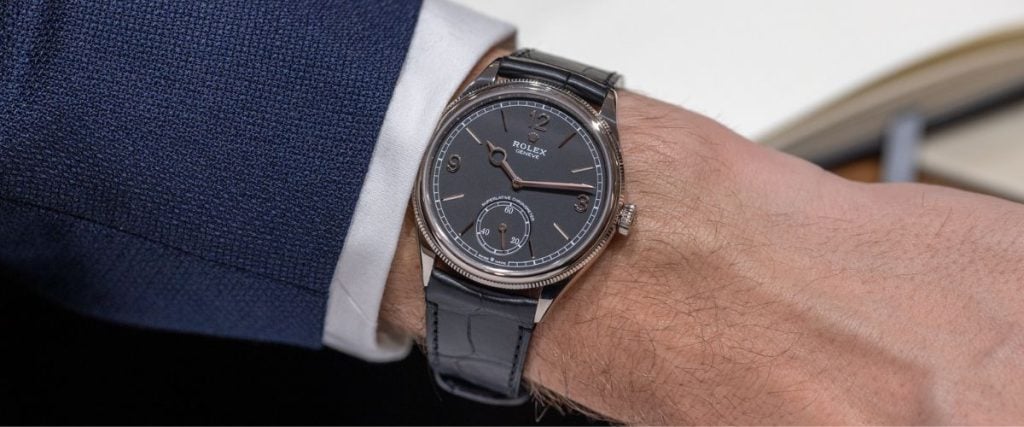
As you’ll have gathered by now, both Vacheron Constantin and Rolex can claim some pretty impressive firsts. Rolex produced the first wristwatch that could change the day and date on the dial, as well as the first dual time zone watch and the first model to display both the day and date on the same dial.
As well as becoming the first brand to create a waterproof watch and receive the Swiss Certificate of Chronometer Precision, it also became the first brand to master the command bezel.
While the Oyster Perpetual is the watch that carries all the Rolex hallmarks, the Datejust is the go-to design for those who value sophistication and functionality. Their bezels vary from smooth to fluted to gem-set and are elevated on a functional level by their instantaneous date window at 3H.
The Rolex Sub, on the other hand, is probably the world’s most famous dive watch. Special designs like the Kermit rack up extortionate price tags on the pre-owned market, while the classic black date and no-date models are as popular now as they were during the 1960s.
Of course, if you know anything about Rolex, you’ll have heard of the Daytona – the 1960s motorsport watch that soared in price after it was spotted on the wrist of Paul Newman. Although not a bestseller at the time, the first-generation Daytona watches featured a distinctive Art Deco style and are now some of the world’s most sought-after watches.
The second-generation Daytona watches are defined by their El Primero movements, before Rolex began equipping them with its Cerachrom bezel inserts. Other famous designs include the Day-Date, fitted with the famous President bracelet, and the GMT-Master II, featuring the iconic and well-deserved red and blue “Pepsi” bezel.
Vacheron Constantin is known for its rare pieces, but some of its most popular collections are also worth noting since each range offers the collector a different style to choose from. The brand keeps its selections small, its most popular line being the Overseas collection, which embodies the zeitgeist of the 1970s sports watch era with its own rendition of the angular bezel.
The unique rectangular indentations on said bezel echo the brand’s Maltese cross logo. Other popular collections include the Fifty Six dress watch, complete with a 22k gold peripheral rotor, and the more vintage-inspired Historiques collection, celebrating the mechanical watch renaissance of yesteryear. However, the most classic of all VC watches is the Patrimony – a no-frills dress watch for all occasions.
Build Quality and Materials
If you’re considering investing in a Vacheron Constantin watch, you must, at some point, have questioned what makes this brand so synonymous with horological excellence. What is this brand doing that earns it the position amongst the top three manufacturers in the world?
Sitting alongside Audemars Piguet and Patek Philippe, there is no argument that Vacheron Constantin has one of the most intriguing histories thanks to being one of the oldest watchmakers in the industry. This uninterrupted heritage comes to life in the hallowed grounds of the brand’s manufacturing facilities, where an affection for the highest horological practices is nurtured.
Apart from the case and bracelet of a VC watch, everything was once made in-house. These time-honored practices extended into some of the most challenging components to produce, like the intricate hairsprings of a movement and pallet forks.
The Geneva striped finishing and perlage you see on a beautifully decorated movement were all once applied by hand, communicating the patience and devotion of every part of a Vacheron Constantin watch.
Vacheron Constantin also has its own Metiers d’Art department, where just a handful of artisans carry out advanced decorative practices on the dials of some of the brand’s designs. Some of these practices carried out in this department include gem-setting, guilloche work, and intricate dial engraving.
Those fully skilled in mastering the trades carried out here can operate rose engines that create meticulous finishes across the watch’s dial using an ancient practice. The engravers at Vacheron Constantin are no less impressive.
They can spend up to three months on one single watch case. Nor are the enamellers to be overlooked, who work on miniature copies of works of art, faithfully reinterpreting them onto a dial’s surface. The brand also uses a selection of exquisite materials that reflect the high price tag of a VC watch.
While exploring what this brand offers, you’ll see many examples of the materials used in its manufacture. The company uses conventional stainless steel for its sportier models and 18k gold in its dress watch and high-complication models, combined with sapphire crystal glass for everyday wear. The brand also uses diamonds for some of its more refined models, not to mention precious gemstones, and crafts some designs from titanium – a material chosen for its lightweight properties.
On the other hand, Rolex has well and truly put itself on the map for its range of proprietary materials. In fact, it is this know-how in the field of material manufacture that makes the brand such a well-respected one in the industry. The designation “in-house” goes a long way in watchmaking and carries a lot of weight, allowing brands like Rolex more control over their design and production processes. While many watch buffs may be able to tell you where Rolex watches are made, some may not know the alloys the brand uses for its ridiculously tough and long-lasting cases.
Rolex has its own research and development department dedicated to crafting new materials, and it is here where its proprietary 18k gold is crafted.
For example, the brand’s rose gold alloy is called Everose and is renowned for its resistance to saltwater and chlorine. The brand’s special blend of 904 stainless steel named Oystersteel also sets this brand’s designs apart, being more corrosion-resistant and harder than 316L stainless steel.
Aside from these case materials, Rolex also specializes in crafting components for the rest of the watch. Its specially formulated luminous paint is named Chromalight, which launched in 2008 and boasts a slightly longer glow with its striking blue emissions.
Rolex also produces its own durable ceramic compound, Cerachrom, which takes roughly 40 hours to create and, from a longevity standpoint, is superior to many alternative bezel materials.
Many in-house movements made by esteemed manufacturers house components crafted from materials resistant to magnetic fields, including the Crown brand. Rolex took five years to perfect the parachrom hairspring, another proprietary and patented element for superior efficiency in a watch.
Suffice to say, while both manufacturers offer a blend of functional and quality materials, Rolex trumps Vacheron Constantin on material innovation, with a range of in-house creations under its belt.
Movements
Both Rolex and Vacheron Constantin produce their own in-house movements, which is a feat in and of itself.
Many connoisseurs find an independently manufactured movement appealing because it guarantees an element of freedom in the design process and an opportunity to enjoy a range of proprietary components that often promise a better, more efficient, and improved mechanical performance.
Rolex began producing self-winding models in 1931. Before then, the brand exclusively manufactured manual-winding engines.
As with so many Swiss companies, however, the brand fell victim to the crushing effects of the quartz crisis and, as a result, sought to collaborate with leaders in quartz technology to produce its own Beta 21 quartz movement. Following this, the brand went on to make its own Oysterquartz movements, adapting to the climate and continuing to thrive.
Having returned to mechanical movement manufacture, Rolex’s catalog brims with some of the most reliable, accurate, and durable movements you can own. It hasn’t changed how it makes mechanical movements since the release of the caliber 3135 three decades ago.
The brand’s movements may not be the most aesthetically pleasing or elaborately decorated. Still, since Rolex is one of the few manufacturers in the world that makes almost all of its own components, its movements consistently show their worth over time, maintaining popularity and contributing to the brand’s resale value on the second-hand market.
On the other hand, when you see the Maltese cross on a dial, you know it has to be a Vacheron Constantin watch and, therefore, powered by an impeccable movement. VC chose this logo as it represented the shape of the component that fixed to the barrel of its movements, so this symbol is about much more than a brand name itself.
But being the long-in-the-tooth brand that it is, one would think that a Vacheron Constantin watch would be powered by a heritage movement that reflects the traditions and techniques of the long-upheld practices of its manufacturing house.
However, this is the modern world, and for quite some years, the brand has been equipping its watches with movements developed by Jaeger-LeCoultre. Don’t let this fact alone put you off, though.
JLC has been producing movements for some of the world’s most famous and respectable brands for many years, including Audemars Piguet and Patek – the other two slices of the “Big Three” pie.
The fact that JLC is one of the industry’s top movement manufacturers makes VC no less amazing or luxurious as a brand. But if in-house movement is your bag, Rolex takes this title.
Prices
Vacheron Constantin produces around 20,000 timepieces a year, while Rolex produces around 1 million yearly. While these numbers are incomparable in scale, Vacheron Constantin watches offer that all-important exclusivity factor due to being made in limited production batches.
Explore the
Biggest Pre-Owned Collection of Luxury Watches
However, part of the desirability of Rolex watches can be equated to their long waiting lists, which drive prices high on the pre-owned market. Since Rolex watches are seen as as more of a statement than a functional tool, they carry colossal wrist presence and can be picked out from across a room.
Both brands produce watches ranging from a few thousand dollars to tens of thousands of dollars. Vacheron Constantin watches do hold their value better than most other brands on the market.
Still, for the purposes of comparing this brand with Rolex, it’s not the better of the two brands for resale value and value retention. Many Rolex watches can double in value on the second-hand market if they’re deemed scarce or have a particularly appealing design feature that collectors crave.
However, the price of a VC watch is reflected in the level of craftsmanship and the intricacy of its many hand-applied finishes and highly complex features.
As a general rule, the RRP of a Vacheron Constantin watch is higher than that of a Rolex. However, investment-wise, Rolex watches retain their value better and can make for even greater family heirlooms.
Conclusion
There is an admirable purity to what both Vacheron Constantin and Rolex do in the watchmaking world. Each brand is worthy of the respect it garners for very different reasons. While Vacheron Constantin is admired for its horological complexity and fine, time-honored practices, Rolex is the brand you would go to for a robust, iconic design that oozes style and status.
While Rolex is undoubtedly the most recognized watchmaker, those in the know are more than aware of the masterpieces that an old but lesser-known brand like Vacheron Constantin can produce. Collectors and fans of both respective brands are not first-time buyers.
But while a Rolex watch will appeal to someone who wants to show the world what they have achieved with a statement piece, a Vacheron Constantin collector is someone who enjoys a private type of luxury – a stealth wealth watch that, despite the materials and complexity behind its design, does not instantly smack of flashiness and ostentatiousness.
Settling the debate between Vacheron Constantin vs Rolex can only be done one way, by asking yourself what is important to you in a watch. In some ways, Vacheron Constantin can be considered the brand that makes better watches because of its high complications.
On the other hand, Rolex watches have better resale value and can make the best investments because of their ability to retain value and appreciate over time. VC isn’t as world famous as Rolex, but it does have over 150 years of extra experience in watch manufacturing compared to Rolex.
At the end of the day, you can’t go wrong with either of these watch brands. Both are respected and revered in the watchmaking world, and they have their own strengths and characteristics that stand for exceptional quality and craftsmanship.
About Exquisite Timepieces
Established in 1998, Exquisite Timepieces is your one-stop shop for all things luxury watches! We are an authorized dealer for 60+ luxury watch brands including Omega, Hublot, Seiko, & Longines! We are proud to showcase one of the world’s largest pre-owned watch collections, including renowned brands like Rolex and Patek Philippe. Check out our brand new watch arrivals here and popular pre-owned listings here.


